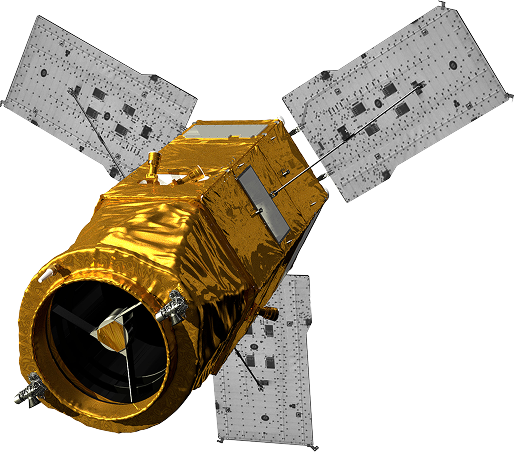

Multi-purpose Practical Satellite (Arirang) No. 7
(Under Development)
- Operating orbit : Low orbit
- Mission : Earth observation
- Payload : Ultra-high-resolution electro-optical camera (sub-meter level)


KOMPSAT-7 is the successor to KOMPSAT-3A and is currently under development as one of the world’s most advanced ultra-high-resolution optical satellites. It is being designed to support detailed observation of the Korean Peninsula and to meet the growing national demand for high-quality satellite imagery. The primary development goals of KOMPSAT-7 include securing core technologies for 30 cm-class ultra-high-resolution optical satellites—a sector where leading countries are intensively competing—and promoting the commercialization of satellite technologies. To achieve this, KARI has developed AEISS-HR (Advanced Earth Imaging Sensor System – High Resolution), an ultra-high-resolution optical payload, and is building a precision Earth observation highly agile satellite system by integrating a control moment gyroscope (CMG)—a first for a Korean satellite. The satellite system, bus, and payload are all being developed based on indigenous Korean technologies. Using a strategic approach, KARI is leading the development of new core technologies while domestic industry partners are advancing existing technologies. This framework has expanded private sector participation to develop the satellite system, bus, and payload. This initiative not only fosters the industrialization of satellite development in Korea but also contributes to the overall growth of the national space industry.
For the development of the KOMPSAT-7 optical payload, KARI handled system design, analysis, assembly, alignment, and test verification. Components such as large-diameter mirrors, highly stable lightweight optical structures, and high-speed, low-noise optoelectronic modules were separately developed by domestic and international research institutes and industries.
The KOMPSAT-7 optical payload includes a highly precise optical system and adopts optical data transmission technology—a first for a Korean satellite—to enable real-time processing of large-volume Earth observation imagery via electro-optical modules and onboard storage/processing systems. The system is equipped with more than one terabit of onboard storage and utilizes high-speed parallel processing to enable real-time compression and encryption, ensuring that large volumes of imagery can be transmitted to ground stations within limited time windows.
To maximize the effectiveness of its ultra-high-resolution optical payload, KOMPSAT-7 incorporates a CMG for enhanced agility—a first among Korean satellites—and features an onboard computer that is over three times faster than those used in KOMPSAT-3 and 3A, significantly improving attitude control performance. The ground image processing system applies advanced parallel processing techniques, enabling it to complete first-stage geometric correction and generate imagery within 15 minutes after receiving satellite data.